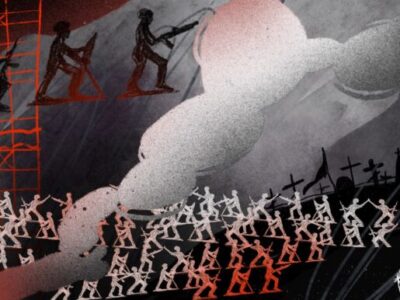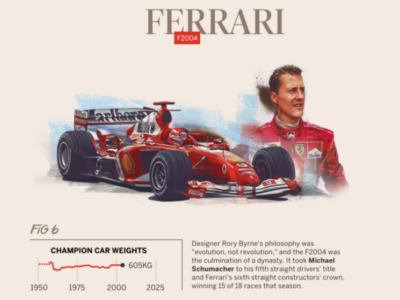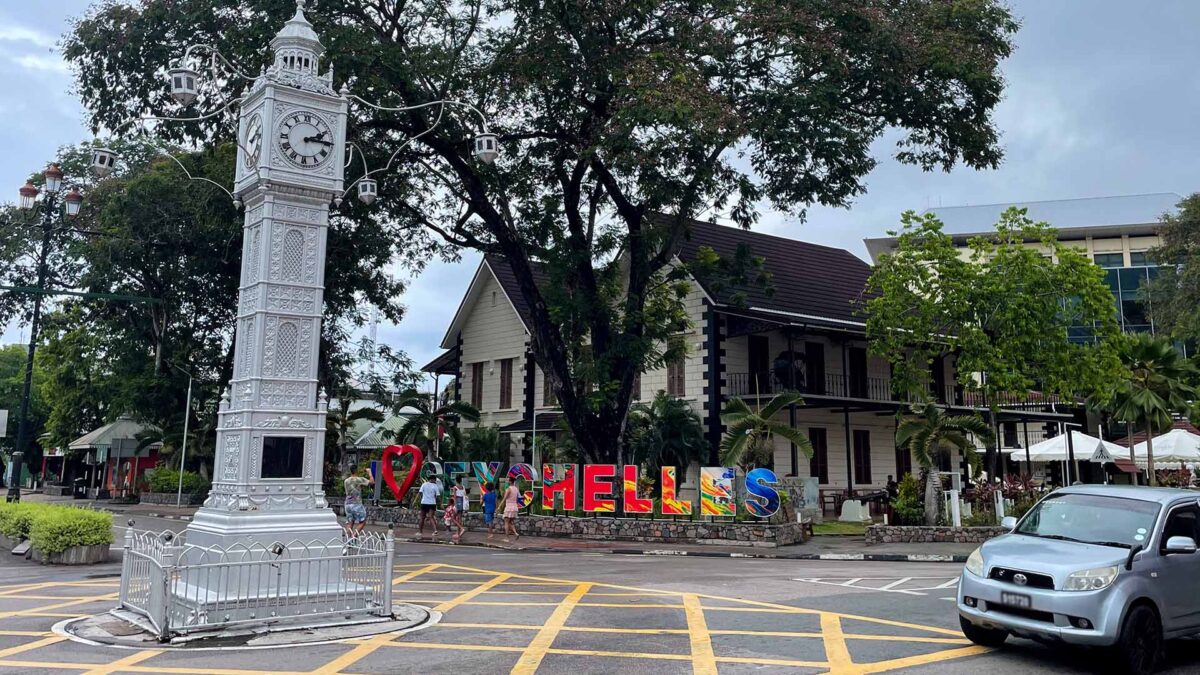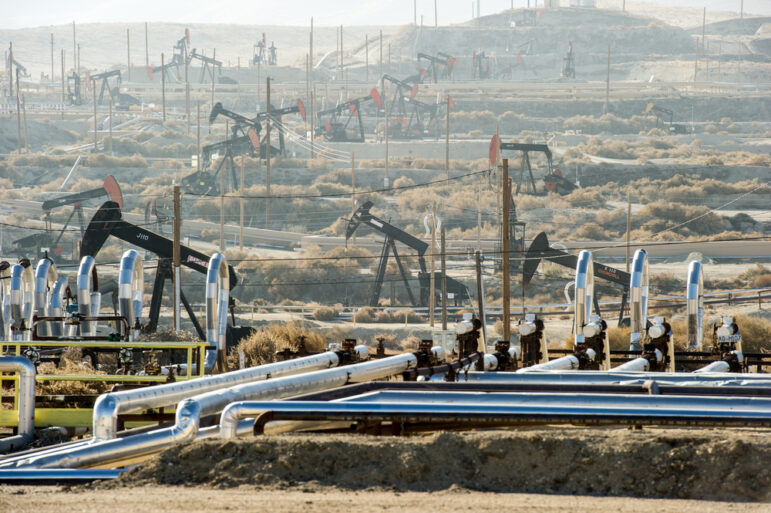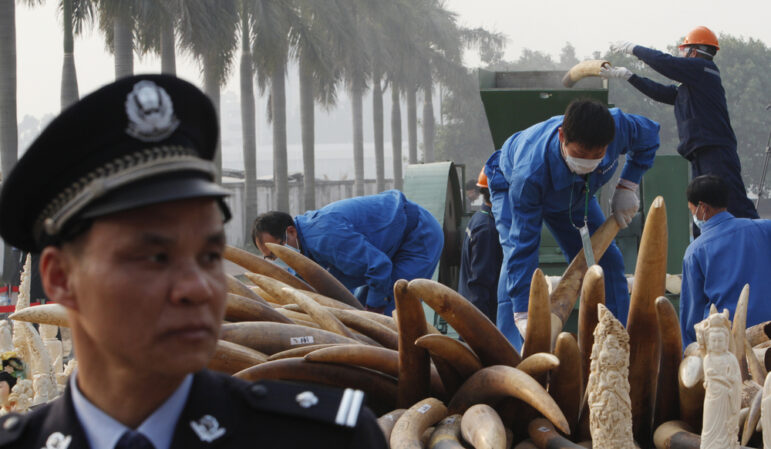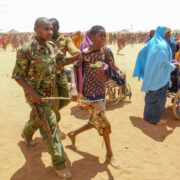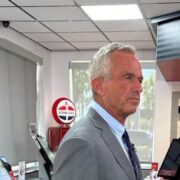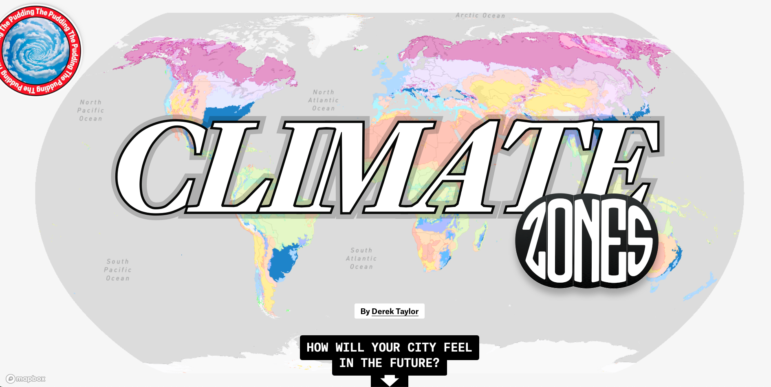
What does climate change feel like? How will your city’s climate shift, 50 years from now? How can we better understand the long-term effects of climate change?
These are the questions Derek Taylor, a data scientist and GIS specialist, set out to explore in his latest piece for The Pudding. Expanding on an earlier project about climate change in Africa, Taylor sought to reimagine the climate future of cities on a global scale.
The resulting interactive story, Climate Zones, visualizes the specific effects of climate change on 70 cities across all five distinct climate zones — arid, tropical, temperate, cold, and polar — as well as their subcategories. Utilizing a dataset that compares 2023 climate statistics with projected 2070 climate statistics, Taylor shows just how differently these cities will pair with these climate zones over time.
Storybench sat down with Taylor to discuss his project and how he hopes it will change the climate conversation.
Question: What inspired you to address the issue of climate change this way?
Derek Taylor: A lot of climate reports and climate articles that I was looking at were all based around really heavy scientific jargon and intangible data points. Looking at something like average sea temperature rise, they don’t really bring the point home if you just say that the oceans are warming by one degree Celsius. Some of these things felt very abstract, even though obviously the repercussions and results of these things would be quite drastic. The initial starting point was thinking about how cities feel [and] how people don’t necessarily experience the climate, they experience the weather. That was one of the foundational lines, thinking about how weather might be different in the future and also about a good way to think about temperature changing. [I was] also thinking about relational changes as well, so not just saying that New York City is going to get warmer, but actually New York City [in 2070] will feel more like Barcelona in 2023.
Q: What does a visual representation of this global issue offer that statistics alone might not be able to accomplish?
DT: I think it’s humanizing the data a little bit. It’s an attempt in sacrificing extreme specificity. Although it does show you that X city rises by five degrees Fahrenheit, that’s the less important storyline of the article, and the more important one is thinking about how these groups of cities will compare in 2070 to cities today.
Q: How were your categorizations informed by the history of climate research?
DT: I found this dataset quite early on. Even before I started thinking about the weather and how cities feel, [I] was finding this dataset that had the 2023 and 2070 cities placed. It’s a dataset of the entire world that shows all the locations of these different climate classifications. I found [it] really interesting because it unlocked the idea that a 90-degree day in Sacramento, where I’m from, and a 90-degree day in Boston feel really different. It doesn’t just have to do with temperature, and these climate classifications bring in a little bit more context and understanding of why specific places might have the same temperature but ultimately feel very different.

Image: Screenshot, Climates Zones, The Pudding
Q: How did you decide which cities to include in this visualization?
DT: The first goal was to choose cities equally across the different climates. Obviously, most of the global cities exist in the temperate zones just because humans have settled in temperate locations. One thing was to try to get cities that represent all the different classifications so there are starting points for comparison. The second thing was choosing cities that people would have some kind of mental picture of. Even if someone might not have visited New Delhi, they’ve seen a depiction of New Delhi where, when you say Los Angeles will have a similar climate in 2070 to New Delhi, there’s a mental image there.
Q: What coding tools did you use to create this data story, and what was the process like?
DT: All the data cleaning, processing, and that sort of work was done either in Python or on Postgres. The actual data side of this project was the easiest; I had the dataset ready and cleaned and sorted in about a week. The big workload was the visualization tools and creating the story. What they use at The Pudding is a JavaScript library called Svelte. Ultimately, the front end is all done using JavaScript and specifically built in the Svelte framework.
Q: I saw that you previously worked on a similar project with a specific focus on Africa. Did that project help as an outline for Climate Zones, and what changes or improvements did you end up making?
DT: Actually, I sent that in to The Pudding as my pitch, kind of as proof of concept. I’d made the 3D-rendered Africa map with a dataset overlaid, and I wanted to overlay a different dataset on it. I initially started off with big dreams to do a data story for every single continent, [but I] quickly realized that that was going to be too big to pull off, so that’s how it got narrowed down a bit from being so broad.
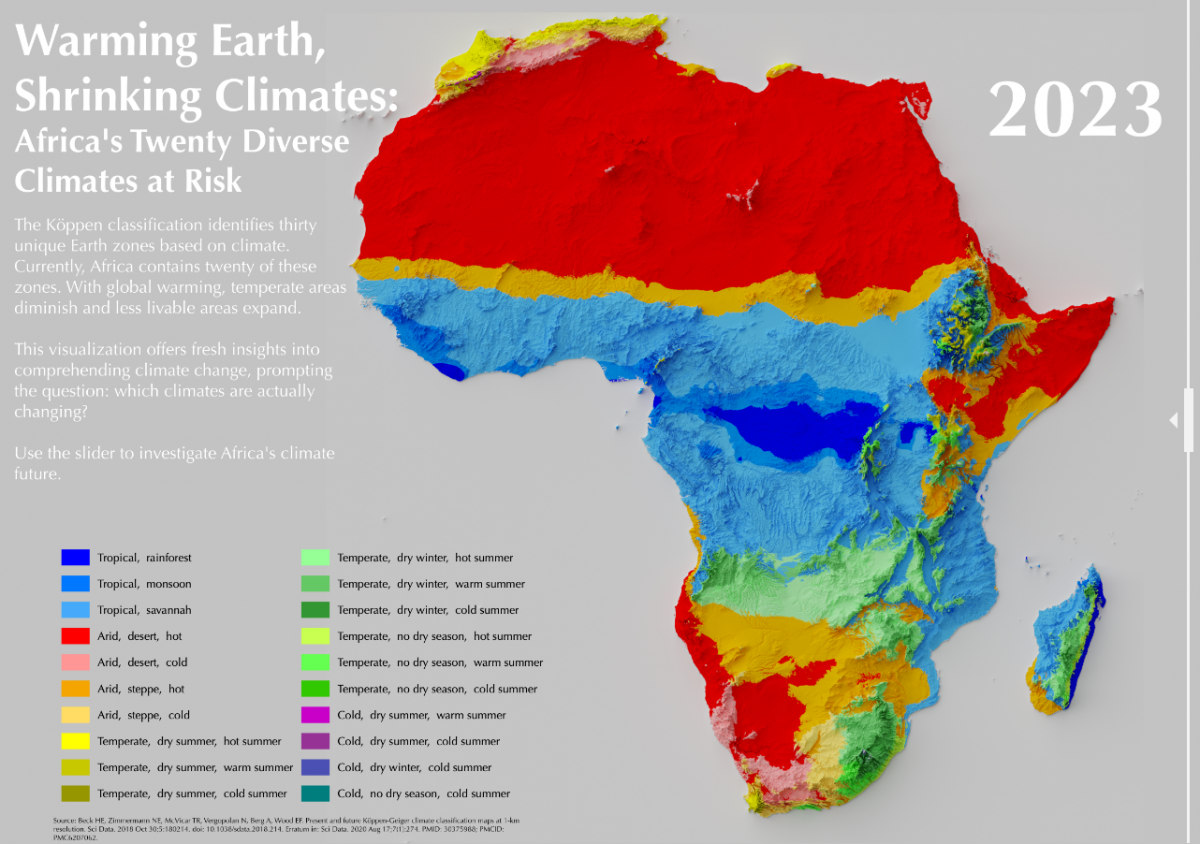
Image: Courtesy of The Pudding
Q: What new perspectives did this project give you on your approach to data science?
DT: In a very tangible, practical way, I use Svelte day-to-day now. I do a lot more front-end development and interactive data visualization, so that helped tremendously. The big takeaway [is] definitely thinking about trying to make the story as simple as possible and every step of the way asking yourself what are the main things you want the reader to take away. If you work backwards from that, it becomes more clear what things you need to visualize and how you need to visualize them. You have to ultimately come out with a more chiseled project that is still technically impressive but doesn’t need all the flashy bits.
Q: What are you hoping your audience will take away from your project?
DT: I think the main hope is that readers get a different perspective on climate change and that potentially it hits home more than reading a more scientific approach to reporting about climate change.
Editor’s Note: This interview originally appeared on Northeastern University’s School of Journalism website, Storybench. It is reprinted here with permission.


